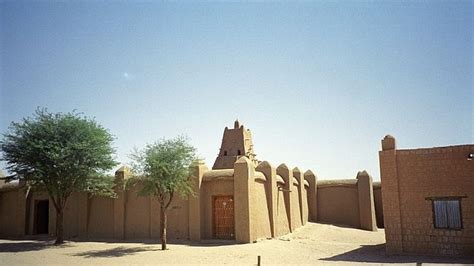Embark on an extraordinary adventure to Timbuktu, a legendary city nestled in the vast expanse of the Sahara Desert. National Geographic takes you on a kid-friendly expedition, unveiling the secrets and wonders of this ancient crossroads of trade and learning.

Introduction to Timbuktu
Timbuktu, the fabled city in the heart of Mali, beckons with its enigmatic allure. Its name has captivated imaginations for centuries, conjuring images of exotic spices, shimmering gold, and ancient libraries.
This iconic city boasts a rich and diverse history, dating back to the 11th century. It emerged as a key center for trade, connecting the Sahara to the Mediterranean Sea. Scholars and merchants flocked to Timbuktu, establishing renowned universities and a flourishing book trade.
Journey into the Heart of Timbuktu
1. Explore the Ancient City Walls:
Step back in time as you wander through the mud-brick walls of Timbuktu. These imposing structures once protected the city from desert raiders and served as a testament to the architectural prowess of its people.
2. Immerse Yourself in the Djingareyber Mosque:
Delve into the heart of Timbuktu’s spiritual heritage by visiting the Djingareyber Mosque. Built in the 14th century, this mud-brick masterpiece is a marvel of Islamic architecture. Its towering minaret offers panoramic views of the city and its surroundings.
3. Discover the Ahmed Baba Institute:
Uncover the literary treasures of Timbuktu at the Ahmed Baba Institute. This renowned center houses a vast collection of ancient manuscripts, preserving the written history and scholarship of this once-great learning hub.
Cultural Immersion
1. Experience the Vibrant Markets:
Immerse yourself in the lively atmosphere of Timbuktu’s markets. Browse a kaleidoscope of colors and scents, picking up traditional textiles, hand-crafted jewelry, and fragrant spices. Interact with local vendors and learn about the city’s vibrant commerce.
2. Visit the Museum of Archaeology and Ethnology:
Journey into the past at the Museum of Archaeology and Ethnology. Discover fascinating exhibits that showcase Timbuktu’s rich cultural heritage through artifacts, traditional crafts, and archival materials.
3. Engage with Local Craftspeople:
Witness the artistry and skill of Timbuktu’s artisans. Visit workshops where you can observe the intricate process of leather tanning, basket weaving, and jewelry making. Engage with the craftsmen and learn firsthand about their techniques and traditions.
Natural Wonders
1. Explore the Majestic Sahara Desert:
Venture beyond the city walls to encounter the beauty of the Sahara Desert. Go on a camel trek or embark on a guided tour to experience the vastness, tranquility, and rugged beauty of this unique ecosystem.
2. Discover the Bozo Villages of Jenne:
Escape the city and embark on a boat trip to the nearby Bozo villages of Jenne. These communities, built on stilts above the River Niger, offer a glimpse into a sustainable and traditional way of life.
The Importance of Preserving Timbuktu
Timbuktu’s cultural and historical significance is immense. Its ancient manuscripts, architectural heritage, and vibrant traditions hold invaluable lessons for humanity. Preserving and protecting this city is essential to safeguarding our collective heritage and promoting cross-cultural understanding.
UNESCO World Heritage Site:
In 1988, Timbuktu was recognized as a UNESCO World Heritage Site in recognition of its outstanding universal value. This designation ensures that the city’s unique character and heritage are preserved for future generations.
Challenges and Conservation Efforts:
Timbuktu faces various challenges, including environmental degradation, urbanization, and climate change. These threats have prompted conservation efforts to safeguard the city’s fragile ecosystem and cultural heritage.
Conclusion:
National Geographic’s expedition into Timbuktu has unveiled the rich tapestry of this legendary city. From its ancient history to its vibrant culture and stunning natural surroundings, Timbuktu stands as a testament to human ingenuity and the importance of preserving our shared heritage. Let us continue to explore, appreciate, and protect this enigmatic jewel in the heart of the Sahara.
Additional Resources
- UNESCO World Heritage Centre: Timbuktu
- National Geographic Magazine: Timbuktu’s Treasure
- African World Heritage Fund: Timbuktu
- The Aga Khan Development Network: Timbuktu Manuscripts Project
Tables
Table 1: Key Historical Milestones in Timbuktu’s History
| Year | Event |
|---|---|
| 11th Century | Founding of Timbuktu |
| 14th Century | Construction of the Djingareyber Mosque |
| 15th Century | Golden age of Timbuktu’s learning |
| 16th Century | Conquest by the Songhai Empire |
| 19th Century | French colonization |
| 1960 | Independence of Mali |
| 1988 | Recognition as a UNESCO World Heritage Site |
Table 2: Timbuktu’s Cultural and Historical Institutions
| Institution | Description |
|---|---|
| Djingareyber Mosque | Historic mud-brick mosque |
| Ahmed Baba Institute | Center for the preservation of ancient manuscripts |
| Museum of Archaeology and Ethnology | Showcase for Timbuktu’s cultural heritage |
| Bozo Villages of Jenne | Traditional stilt-built communities |
Table 3: Timbuktu’s Natural Wonders
| Feature | Description |
|---|---|
| Sahara Desert | Vast and arid desert |
| River Niger | Major river flowing through Timbuktu |
| Timbuktu Desert National Park | Protected area showcasing the Sahara’s biodiversity |
Table 4: Challenges and Conservation Efforts in Timbuktu
| Challenge | Conservation Effort |
|---|---|
| Environmental degradation | Sustainable tourism practices |
| Urbanization | Controlled development and heritage protection |
| Climate change | Adaptation measures and research |
| Preservation of manuscripts | Digitization and preservation projects |
